第82章 CHAPTER XVI A PARASITE OF THE MAGGOT(5)
My dealings as against insects are, when all is said, nothing but dissecting room wounds and carbuncle flies' stings. In addition to the gangrene that soon impairs and blackens the tissues, I obtain convulsions similar to those produced by the scorpion's sting. In its convulsive effects, the venomous fluid emitted by the sting bears a close resemblance to the muscular infusions with which Ifill my injector. We are entitled, therefore, to ask ourselves if poisons, generally speaking, are not themselves a produce of demolition, a casting of the organism perpetually renewed, waste matter, in short, which, instead of being gradually expelled, is stored for purposes of attack and defense. The animal, in that case, would arm itself with its own refuse in the same way as it sometimes builds itself a home with its intestinal recrement.
Nothing is wasted; life's detritus is used for self defense.
All things considered, my preparations are meat extracts. If Ireplace the flesh of the insect by that of another animal, the ox, for instance, shall I obtain the same results? Logic says yes; and logic is right. I dilute with a few drops of water a little Liebig's extract, that precious standby of the kitchen. I operate with this fluid on six Cetoniae or rosechafers, four in the grub stage, two in the adult stage. At first, the patients move about as usual. Next day, the two Cetoniae are dead. The larvae resist longer and do not die until the second day. All show the same relaxed muscles, the same blackened flesh, signs of putrefaction.
It is probable, therefore, that, if injected into our own veins, the same fluid would likewise prove fatal. What is excellent in the digestive tubes would be appalling in the arteries. What is food in one case is poison in the other.
A Liebig's extract of a different kind, the broth in which the liquefier puddles, is of a virulence equal, if not superior, to that of my products. All those operated upon, Capricorns, sacred beetles, ground beetles, die in convulsions. This brings us back, after a long way round, to our starting point, the maggot of the flesh fly. Can the worm, constantly floundering in the sanies of a carcass, be itself in danger of inoculation by that whereon it grows fat? I dare not rely upon experiments conducted by myself: my clumsy implements and my shaky hand make me fear that, with subjects so small and delicate, I might inflict deep wounds which of themselves would bring about death.
Fortunately, I have a collaborator of incomparable skill in the parasitic Chalcidid. Let us apply to her. To introduce her germs, she has perforated the maggot's paunch, has even done so several times over. The holes are extremely small, but the poison all around is excessively subtle and has thus been able, in certain cases, to penetrate. Now what has happened? The pupae, all from the same apparatus, are numerous. They can be divided into three not very unequal classes, according to the results supplied. Some give me the adult flesh fly, others the parasite. The rest, nearly a third, give me nothing, neither this year nor next.
In the first two cases, things have taken their normal course: the grub has developed into a fly, or else the parasite has devoured the grub. In the third case, an accident has occurred. I open the barren pupae. They are coated inside with a dark glaze, the remains of the dead maggot converted into black rottenness. The grub, therefore, has undergone inoculation by the virus through the fine openings effected by the Chalcidid. The skin has had time to harden into a shell; but it was too late, the tissues being already infected.
There you see it: in its broth of putrefaction, the worm is exposed to grave dangers. Now there is a need for maggots in this world, for maggots many and voracious, to purge the soil as quickly as possible of death's impurities. Linnaeus tells us that 'Tres muscae consumunt cadaver equi aeque cito ac leo." [Three flies consume the carcass of a horse as quickly as a lion could do it.]
There is no exaggeration about the statement. Yes, of a certainty, the offspring of the flesh fly and the bluebottle are expeditious workers. They swarm in a heap, always seeking, always snuffling with their pointed mouths. In those tumultuous crowds, mutual scratches would be inevitable if the worms, like the other flesh eaters, possessed mandibles, jaws, clippers adapted for cutting, tearing and chopping; and those scratches, poisoned by the dreadful gruel lapping them, would all be fatal.
How are the worms protected in their horrible work yard? They do not eat: they drink their fill; by means of a pepsin which they disgorge, they first turn their foodstuffs into soup; they practice a strange and exceptional art of feeding, wherein those dangerous carving implements, the scalpels with their dissecting room perils, are superfluous. Here ends, for the present, the little that Iknow or suspect of the maggot, the sanitary inspector in the service of the public health.